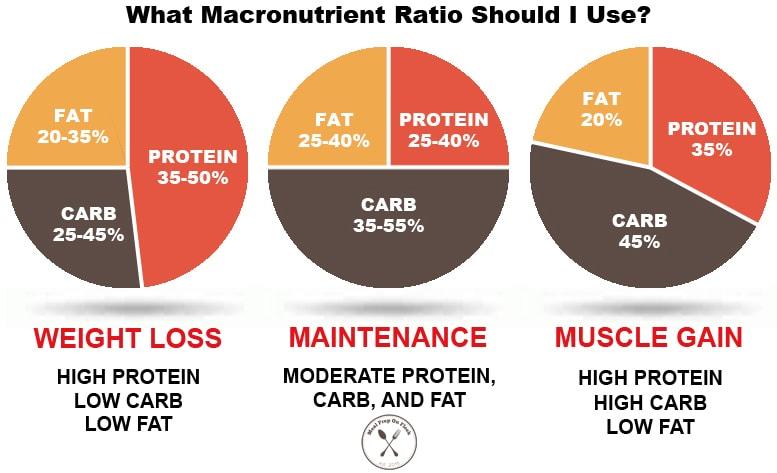Achieving fat loss while maintaining a healthy and balanced lifestyle can often seem like a daunting task. However, understanding and mastering the balance of macronutrients—proteins, carbohydrates, and fats—can simplify this journey significantly. In this guide, we will explore the essential steps to effectively balance these macronutrients to optimize fat loss. By understanding the unique role each macronutrient plays in your body and learning how to adjust their ratios according to your individual needs, you can create a sustainable dietary plan that supports your fat loss goals. Whether you’re just starting out or looking to refine your current approach, this article will equip you with the knowledge and strategies to confidently take control of your nutrition and achieve lasting results.
Understanding Macronutrients and Their Role in Fat Loss
To effectively manage fat loss, it’s crucial to understand the roles of macronutrients: proteins, carbohydrates, and fats. Each of these plays a distinct part in your body’s metabolism and energy balance. Proteins are essential for repairing and building muscle tissues, which is vital when you’re trying to lose fat without sacrificing muscle mass. Carbohydrates provide the primary source of energy for your workouts, supporting performance and recovery. Lastly, fats are not to be feared; they help in hormone production and nutrient absorption, making them indispensable in a balanced diet.
Here’s how you can structure your macronutrient intake for optimal fat loss:
- Prioritize Protein: Aim to include a source of lean protein in every meal. This helps in preserving muscle mass and increasing satiety.
- Control Carbs: Choose complex carbohydrates like whole grains, fruits, and vegetables. These provide sustained energy and are rich in fiber.
- Incorporate Healthy Fats: Include sources like avocados, nuts, and olive oil, which support overall health and keep you feeling full longer.
Balancing these macronutrients effectively can enhance your fat loss journey, ensuring you not only shed pounds but also maintain a healthy and sustainable lifestyle.

Crafting the Perfect Macronutrient Ratio for Your Body Type
When it comes to shedding those extra pounds, understanding your body’s unique macronutrient needs is crucial. Tailoring your intake of proteins, carbohydrates, and fats according to your body type can significantly enhance your fat loss journey. Each body type—ectomorph, mesomorph, or endomorph—responds differently to these macronutrients, and recognizing this can make all the difference.
- Ectomorphs: Typically lean with a high metabolism, they benefit from a higher carbohydrate intake. Aim for a ratio of 55% carbs, 25% protein, and 20% fats.
- Mesomorphs: Naturally muscular and athletic, they thrive on a balanced diet. A 40% carb, 30% protein, and 30% fat ratio can optimize fat loss while maintaining muscle mass.
- Endomorphs: Prone to storing fat, they should focus on higher protein and fat intake, with a macronutrient split of 25% carbs, 35% protein, and 40% fats.
Remember, these ratios are starting points. It’s essential to listen to your body and adjust based on your progress and energy levels. By fine-tuning your macronutrient balance, you’ll not only lose fat more efficiently but also enhance your overall health and well-being.

Incorporating Balanced Macronutrient Meals into Your Daily Routine
Achieving a well-rounded meal plan doesn’t have to be daunting. It’s all about making strategic choices that support your fat loss goals while nourishing your body. Begin by focusing on the three primary macronutrients: proteins, carbohydrates, and fats. Each plays a crucial role in maintaining energy levels, building muscle, and supporting overall health. For a balanced meal, aim to fill your plate with the following proportions:
- Protein: 25-30% of your daily caloric intake. Opt for lean sources such as chicken, turkey, fish, tofu, or legumes to promote muscle repair and growth.
- Carbohydrates: 40-50% of your daily calories. Choose complex carbs like whole grains, fruits, and vegetables to ensure a steady release of energy throughout the day.
- Fats: 20-30% of your daily intake. Incorporate healthy fats from avocados, nuts, seeds, and olive oil to support brain function and hormone production.
By consistently integrating these macronutrients into your meals, you not only foster a sustainable approach to fat loss but also enhance your overall well-being. Remember, the key is balance and moderation. Use these guidelines to adjust your portion sizes and food choices, ensuring each meal is both satisfying and nutritious.

Monitoring and Adjusting Your Macronutrient Intake for Optimal Results
Keeping a close eye on your macronutrient intake is crucial for achieving your fat loss goals. Start by understanding your individual needs, which may vary based on factors such as age, gender, activity level, and metabolic rate. Once you have a baseline, make adjustments as needed to ensure you’re consuming the right balance of carbohydrates, proteins, and fats. Remember, it’s not just about cutting calories but optimizing the quality and proportion of these nutrients. Regularly track your intake using apps or food diaries to stay accountable.
Consider these key strategies to fine-tune your macronutrient intake:
- Prioritize Protein: Ensure you’re getting enough protein to support muscle maintenance and repair. Aim for lean sources like chicken, fish, and plant-based proteins.
- Moderate Carbohydrates: Focus on complex carbs such as whole grains, vegetables, and legumes to provide sustained energy and support your workouts.
- Healthy Fats: Incorporate sources of healthy fats like avocados, nuts, and olive oil to keep you satiated and support overall health.
Regularly review your progress and adjust your macronutrient ratios as needed to overcome plateaus and continue making progress towards your fat loss goals. Stay flexible and be ready to tweak your approach for optimal results.
